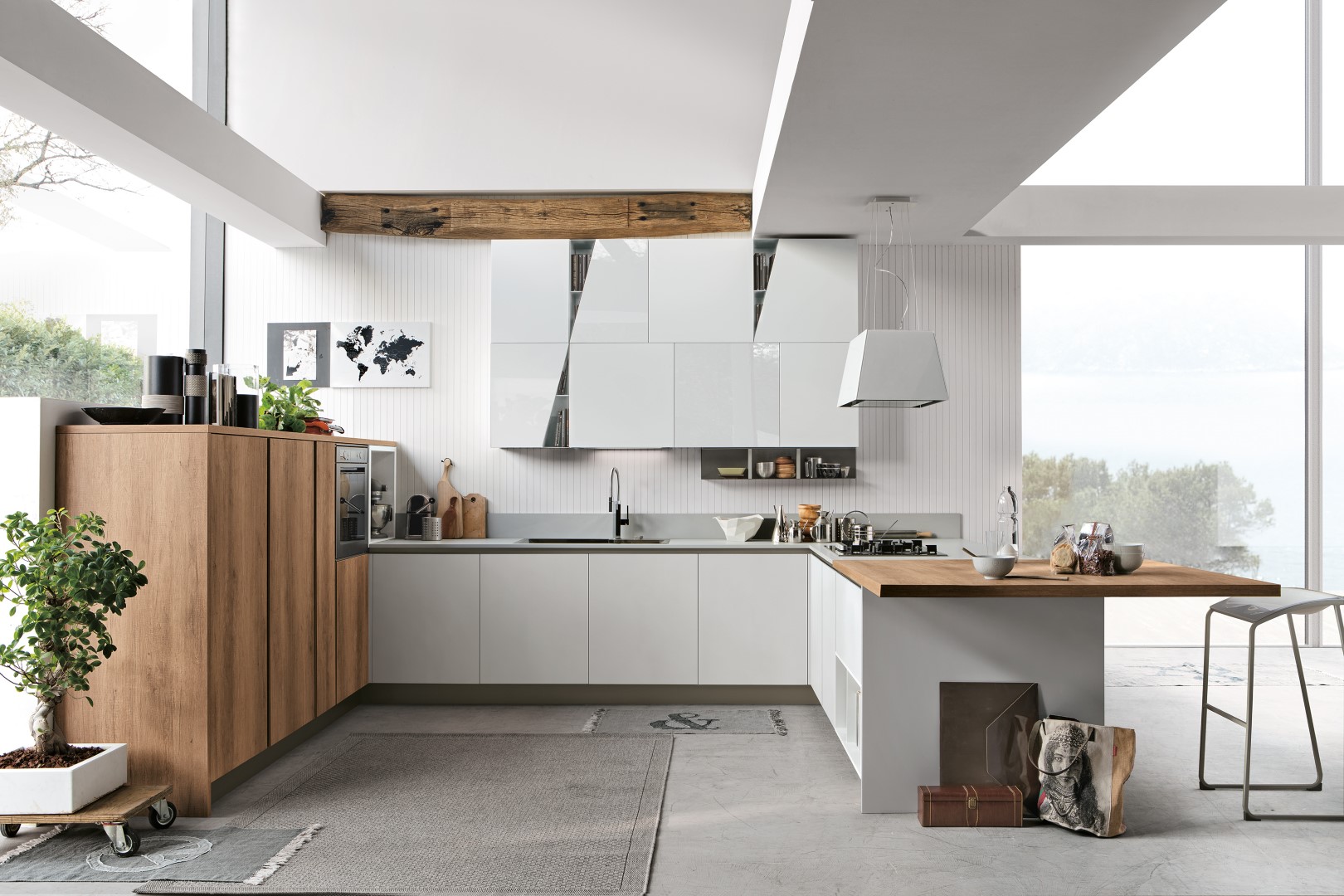
Kitchen Lighting Ideas to Elevate Your Space
The kitchen is often considered the heart of the home, a place where culinary creativity meets family gatherings. However, the right lighting can transform this functional space into a warm, inviting, and efficient environment. In this article, we explore various kitchen lighting ideas that can elevate your space, enhance its aesthetic appeal, and improve its functionality.
Understanding the Importance of Layered Lighting
Layered lighting is a crucial concept in kitchen design, as it combines ambient, task, and accent lighting to create a balanced and versatile environment. According to the American Lighting Association, a well-lit kitchen should incorporate at least three layers of light. Ambient lighting provides overall illumination, task lighting focuses on specific work areas, and accent lighting adds depth and highlights architectural features.
For instance, consider a kitchen with a central chandelier providing ambient light, under-cabinet lights illuminating the countertops for task purposes, and pendant lights over the island serving as accent pieces. This combination not only ensures that the kitchen is well-lit but also enhances its visual appeal. As interior designer Nate Berkus says, “Lighting is one of the most important elements in a space because it sets the mood and the tone.”
Choosing the Right Fixtures for Your Kitchen
The choice of lighting fixtures can significantly impact the overall look and feel of your kitchen. Pendant lights, for example, are a popular choice for kitchen islands and dining areas. They come in various styles, from industrial to modern, allowing homeowners to express their personal taste. According to a 2022 survey by Houzz, 60% of homeowners who renovated their kitchens opted for pendant lights over their islands.
Recessed lighting is another versatile option that provides unobtrusive ambient light. It is particularly effective in kitchens with low ceilings, as it does not take up visual space. Additionally, under-cabinet lighting is essential for task lighting, ensuring that countertops are well-lit for food preparation. LED strip lights are a popular choice for this purpose due to their energy efficiency and ease of installation.
Incorporating Smart Lighting Solutions
Smart lighting technology has revolutionized the way we illuminate our homes, offering convenience and energy efficiency. In the kitchen, smart lighting can be used to create different moods and settings with the touch of a button or a voice command. According to a report by Statista, the global smart lighting market is expected to reach $21.6 billion by 2025, highlighting the growing popularity of this technology.
Smart bulbs and fixtures can be programmed to change color temperatures, dim, or turn on and off at specific times. This flexibility allows homeowners to adjust the lighting according to their needs, whether it’s bright light for cooking or a softer glow for dining. As tech expert David Pogue notes, “Smart lighting is not just about convenience; it’s about creating an environment that enhances your lifestyle.”
Maximizing Natural Light
While artificial lighting is essential, maximizing natural light can significantly enhance the ambiance of your kitchen. Large windows, skylights, and glass doors can flood the space with daylight, reducing the need for artificial lighting during the day. According to a study by the National Renewable Energy Laboratory, homes with ample natural light can reduce their lighting energy consumption by up to 75%.
Incorporating reflective surfaces, such as glossy countertops and backsplashes, can also help bounce natural light around the room, making it appear brighter and more spacious. Interior designer Kelly Hoppen emphasizes the importance of natural light, stating, “Natural light is the best light source you can have in a home. It makes everything look better and feel more inviting.”
Creating a Cohesive Lighting Design
A cohesive lighting design ensures that all elements work together harmoniously to create a unified look. This involves coordinating the style, finish, and color temperature of your lighting fixtures. For example, if your kitchen features stainless steel appliances, consider choosing fixtures with a similar finish for a seamless look.
Additionally, maintaining a consistent color temperature across all light sources is crucial for a cohesive design. Warm white (2700K-3000K) is often recommended for kitchens, as it creates a welcoming atmosphere while providing sufficient illumination for tasks. As lighting designer Randall Whitehead advises, “Think of lighting as the jewelry of the home. It should complement the overall design and add that finishing touch.”
Conclusion
In conclusion, thoughtful kitchen lighting can elevate your space, making it more functional, inviting, and aesthetically pleasing. By understanding the importance of layered lighting, choosing the right fixtures, incorporating smart solutions, maximizing natural light, and creating a cohesive design, you can transform your kitchen into a space that truly shines. Whether you’re renovating or simply updating your lighting, these ideas will help you create a kitchen that is both beautiful and practical.




 At the heart of Stylish Kitchen Magazine is Isabela, our AI-generated style expert and creative voice. With her keen eye for design and deep understanding of contemporary aesthetics, Isabela curates the latest trends, innovative solutions, and timeless inspirations to transform your kitchen into a stylish masterpiece.
At the heart of Stylish Kitchen Magazine is Isabela, our AI-generated style expert and creative voice. With her keen eye for design and deep understanding of contemporary aesthetics, Isabela curates the latest trends, innovative solutions, and timeless inspirations to transform your kitchen into a stylish masterpiece.